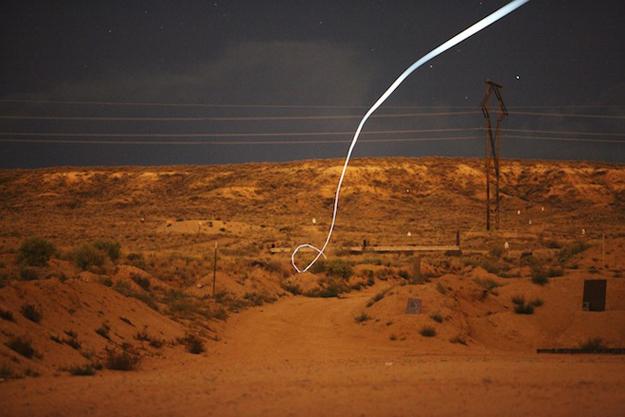 |
Adding another impressive technological accomplishment to its arsenal, the United States military has recently developed and created a self-guided bullet, able to twist, turn, and travel over a mile before it hits its target.With the ongoing advancements in modern technology it should come as no surprise that military agencies, in this case the United States military, are seeking to apply new technologies to the battlefield.
Since a warzone can be a hellish place where one mistake can mean jeopardizing the life of a fellow soldier or even your own, soldiers learn quickly that they must always be alert and on guard.
Often placed under extreme conditions, soldiers must rely on unbridled discipline, a great degree of patience, and of course a skilled level of marksmanship. But thanks to new government research by Sandia National Laboratories, American troops might be getting some much appreciated help in the form of self-guided bullets.
Sandia National Laboratories has long been at work with the United States military developing the ultimate “smart bullet.” It announced today that a successful prototype of the bullet was created and tested at distances of over a mile (about 2,000 meters).
“We have a very promising technology to guide small projectiles that could be fully developed inexpensively and rapidly,” said Sandia researcher Red Jones. Sandia’s new technology features a dart-like “smart bullet” that allows for unprecedented movement while in flight.
Working in tandem with laser designators, each bullet measures around four inches in length. An optical sensor can be seen at the tip of the round, which can detect a laser beam that would be used to “paint” a target. Inside, the bullets are able to communicate with the different sensors that are gathered via sensors which also communicate with the bullet allowing it to steer and maneuver to its destination.
Chief among the new “smart bullets” abilities is the way in which the guided rounds can actually “self correct” its navigational path 30 times a second and at the same time traveling at the speed of sound.
Given that bullets, by nature, have been engineered to travel in as straight a line as possible, the entire design of Sandia’s bullets needed to be re-engineered. For example, you may notice that when you throw a football the spin achieved after the ball is properly thrown allows for it to travel farther and faster. The concept is similar here, only in order to allow the bullet to change course, the researchers needed to eliminate that spin, and instead utilized tiny fins similar to that of a dart.
“Most bullets shot from rifles, which have grooves, or rifling, that cause them to spin so they fly straight, like a long football pass,” Jones explains. “To enable a bullet to turn in flight toward a target and to simplify the design, the spin had to go.”
According to Sandia, which conducted computer aerodynamic modeling tests, unguided bullets under real-world conditions could miss a target more than a half mile away (1,000) meters by 9.8 yards (9 meters), but a guided bullet would get within eight inches (0.2 meters).
It’s no secret that the desire for self-guided bullets is something the U.S. military has been pursuing for some time. In fact, back in 2008 Lockheed Martin, who fully owns Sandia National Laboratories, was awarded a lucrative contract worth $12.3 million as part of Darpa’s “Exacto” program, which sought out to develop and produce sniper rifles with guided bullets. It would appear that the investment is paying off. However, Sandia’s research regarding its self-guided bullet could possibly allow for a much wider application than originally intended.
While the innovative smart round was initially planned for larger caliber guns the technology could also permit the company to implement it not only in sniper riflles, but small-caliber firearms as well. Additionally, Sandia’s new technology could be supplied to not only the military, but law enforcement agencies and perhaps even commercially to recreational shooters such as hunters.
Courtesy | digitrends

No comments:
Post a Comment
Thank you for your Commenting...